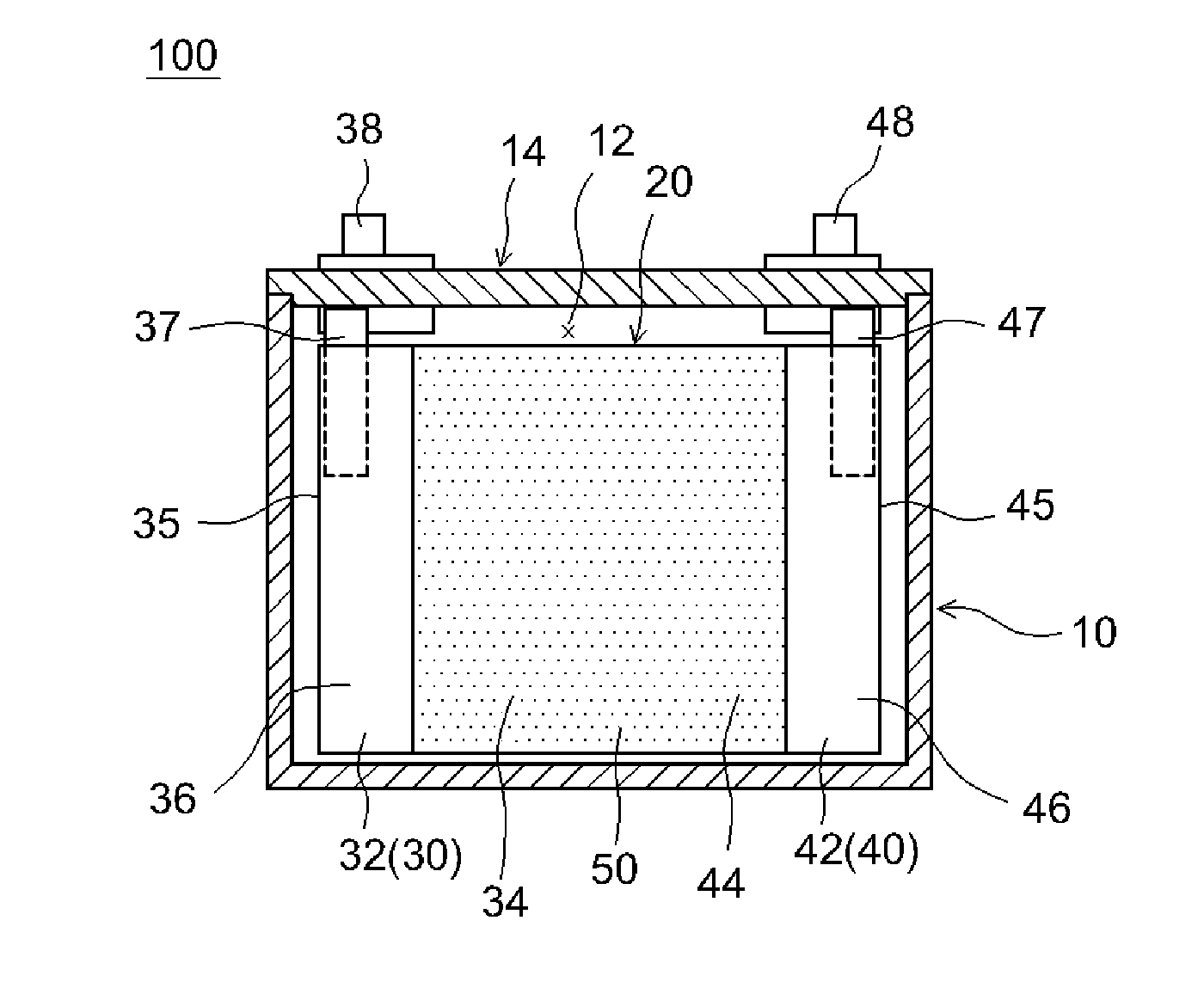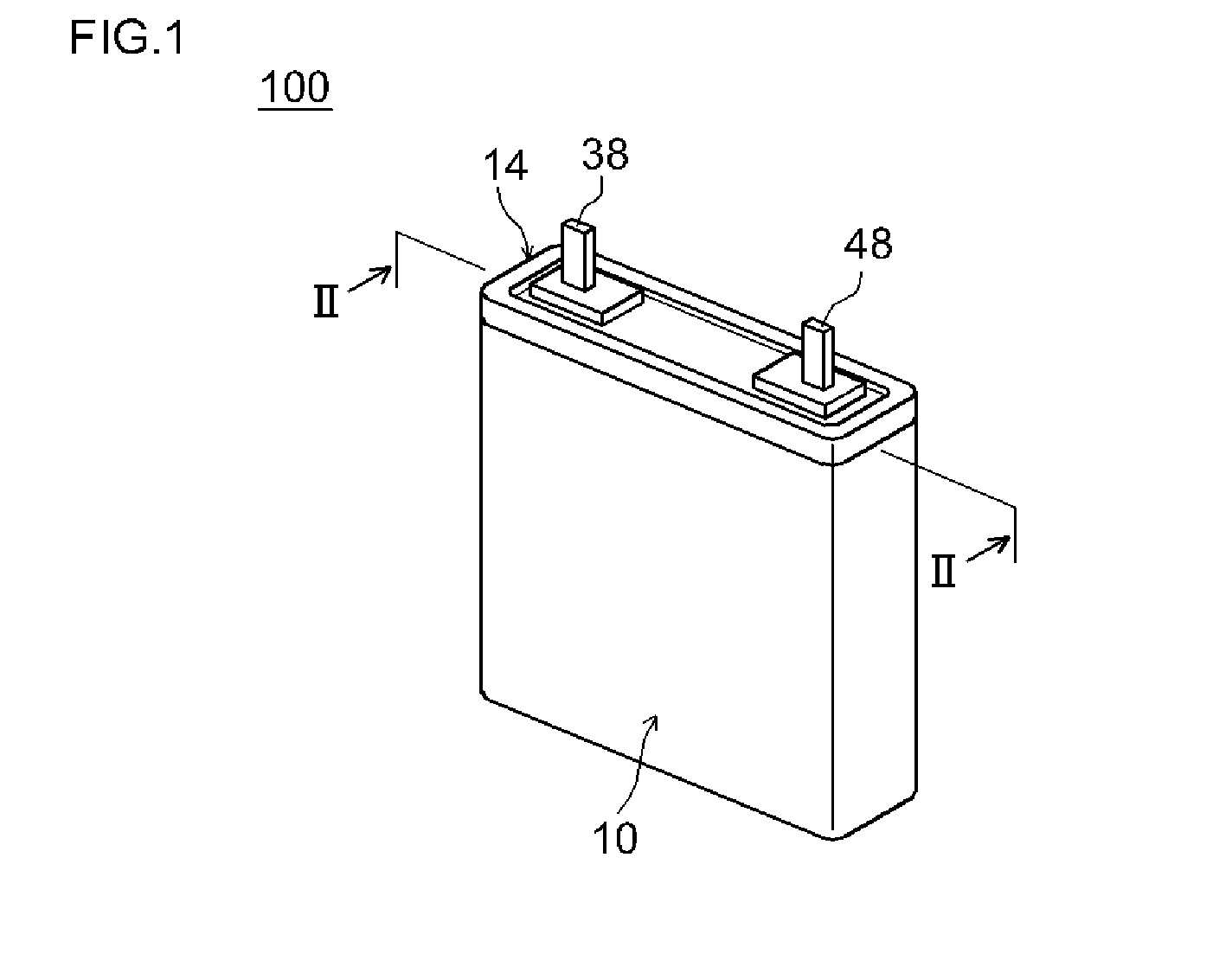Lithium secondary battery and manufacturing method for same
a secondary battery and manufacturing method technology, applied in the direction of batteries, sustainable manufacturing/processing, cell components, etc., can solve the problems of inability to realize the output of the secondary battery, insufficient technical investigation applied to favorable void formation in the respective active material layer, and insufficient density of the positive electrode active material, etc., to achieve efficient charge transfer between the electrodes, suppress the increase in internal resistance, and suitable battery characteristics
- Summary
- Abstract
- Description
- Claims
- Application Information
AI Technical Summary
Benefits of technology
Problems solved by technology
Method used
Image
Examples
experiment 1
[0072][Experiment 1]
[0073]Lithium secondary batteries were constructed by fixing the porosity of the negative electrode active material and varying the porosity of the positive electrode active material.
[0074]First, the negative electrode (negative electrode sheet) of the lithium secondary battery was manufactured. More specifically, the negative electrode active material layer forming paste was prepared by mixing together graphite as the negative electrode active material and styrene butadiene rubber (SBR) and carboxy methyl cellulose (CMC) as the binding material in ion-exchanged water such that a weight percentage ratio of the materials was 98:1:1. The prepared paste was then coated onto both surfaces of copper foil having a thickness of approximately 10 μm, serving as the negative electrode collector. Next, moisture in the paste was dried, whereupon the resulting component was stretched into a sheet form using a roll pressing machine such that a negative electrode active materia...
experiment 2
[0083][Experiment 2]
[0084]Next, lithium secondary batteries were constructed by fixing the porosity of the positive electrode active material and varying the porosity of the negative electrode active material.
[0085]First, the positive electrode (positive electrode sheet) of the lithium secondary battery was manufactured. More specifically, the positive electrode active material layer forming paste was prepared by mixing together a lithium composite oxide (LiNi0.8Co0.2O2) powder as the positive electrode active material, acetylene black as the conductive material, and polyvinylidene fluoride (PVDF) as the binding material with N-methylpyrrolidone (NMP) such that a weight percentage ratio of the materials was 87:10:3. The prepared paste was then coated onto both surfaces of sheet form aluminum foil having a thickness of approximately 10 μm, serving as the positive electrode collector. Next, moisture in the paste was dried, whereupon the resulting component was stretched into a sheet f...
PUM
| Property | Measurement | Unit |
|---|---|---|
| porosity | aaaaa | aaaaa |
| porosity | aaaaa | aaaaa |
| porosity | aaaaa | aaaaa |
Abstract
Description
Claims
Application Information
 Login to View More
Login to View More - R&D
- Intellectual Property
- Life Sciences
- Materials
- Tech Scout
- Unparalleled Data Quality
- Higher Quality Content
- 60% Fewer Hallucinations
Browse by: Latest US Patents, China's latest patents, Technical Efficacy Thesaurus, Application Domain, Technology Topic, Popular Technical Reports.
© 2025 PatSnap. All rights reserved.Legal|Privacy policy|Modern Slavery Act Transparency Statement|Sitemap|About US| Contact US: help@patsnap.com



